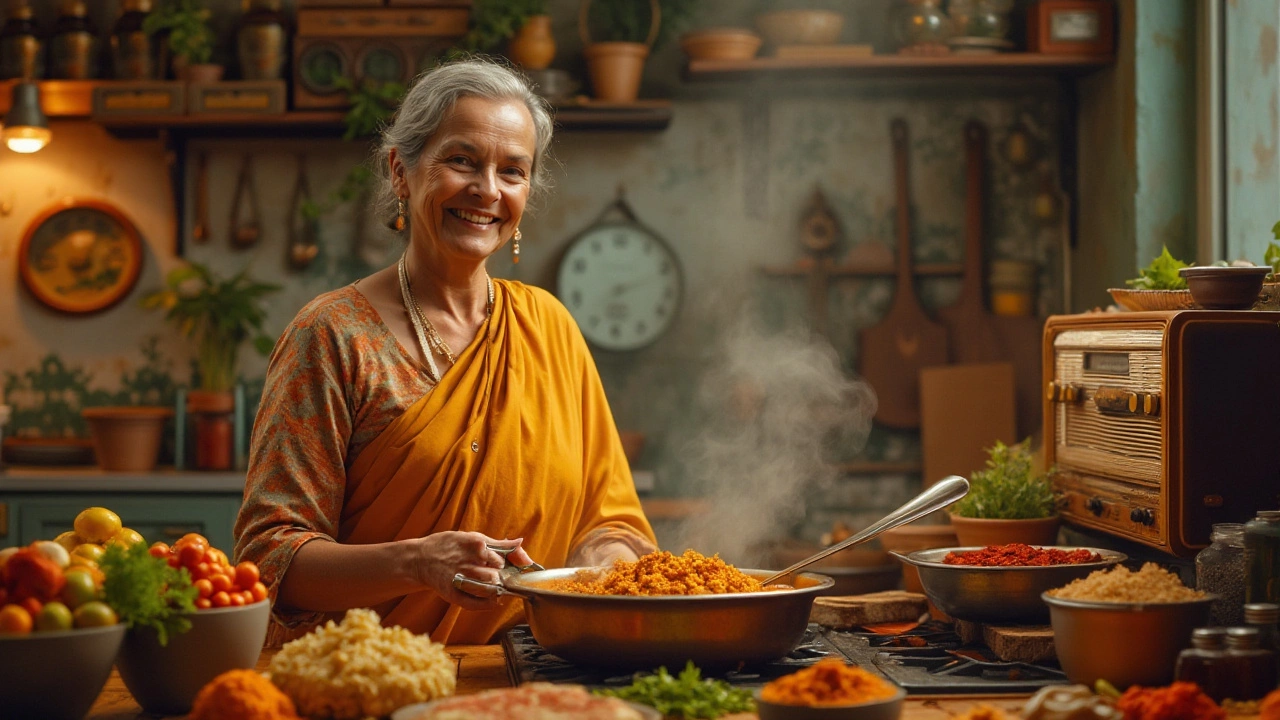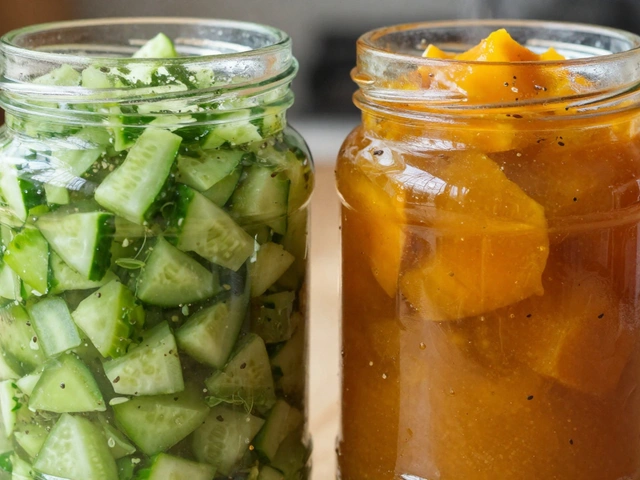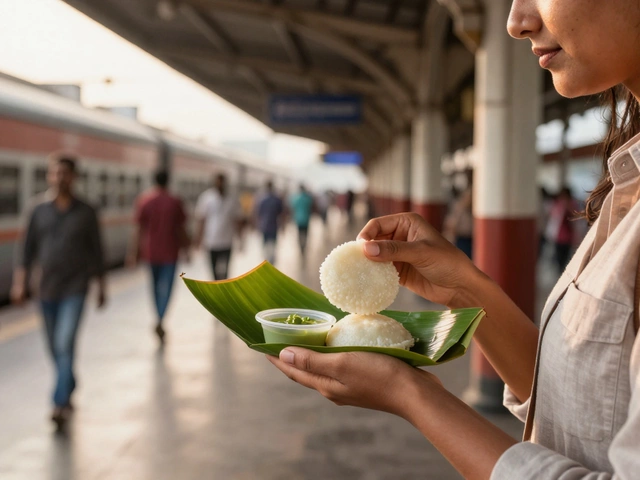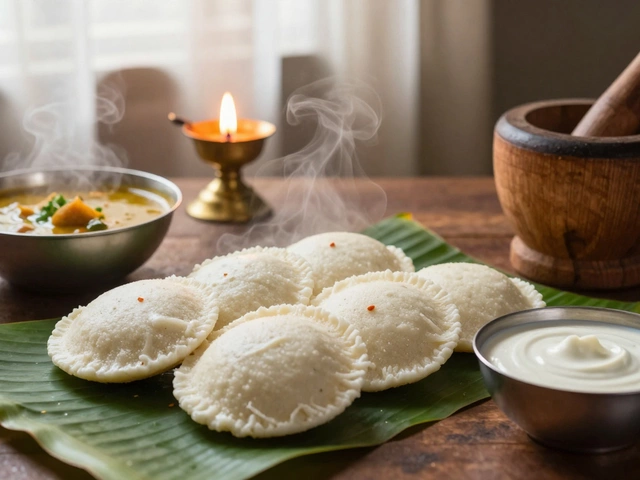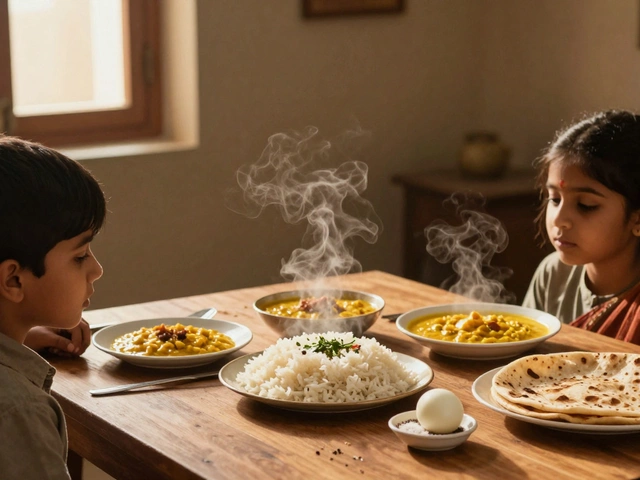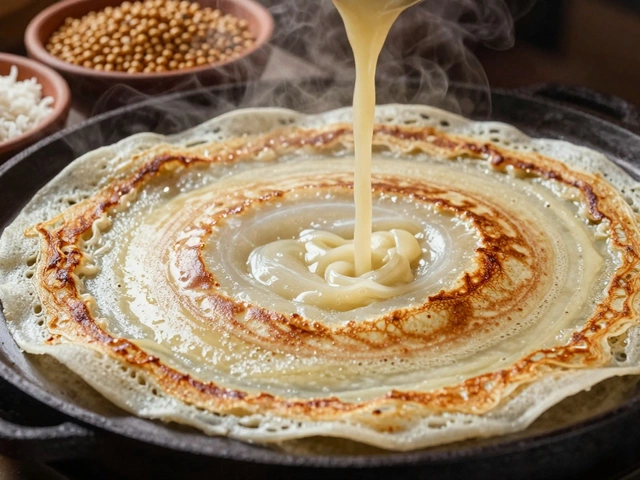Indian cuisine, with its rich tapestry of flavors and aromas, has long held a place in the hearts of food enthusiasts around the world. Yet, among the myriad of dishes that India has to offer, certain recipes stand out on American soil, delighting palates with their bold taste. In this article, we will embark on a culinary journey to uncover which Indian dish reigns supreme among Americans.
From aromatic spices to creamy textures, understanding why certain dishes have become beloved staples in American homes offers us a unique insight into the fusion of cultures. We'll also provide easy-to-follow tips for replicating the dish in your kitchen, so you can bring a piece of India's vibrant culinary landscape right to your dining table.
- Popularity of Indian Cuisine in America
- The Dish That Captured American Hearts
- Key Ingredients and Spices
- Cooking Tips and Techniques
- Serving Suggestions and Sides
- Cultural Significance and Variations
Popularity of Indian Cuisine in America
Indian cuisine's rise in America is no accident. The melting pot that is America has long embraced a variety of culinary traditions, yet Indian cuisine has grown exponentially in popularity, often landing itself among the top sought-after ethnic foods in the country. This surge isn't just attributed to the increasing number of Indian immigrants, but to the nation's broader fascination with exotic flavors that offer a taste of the rich and diverse – a testament to Indian cooking's complexity and appeal. A balance of spicy, sweet, pungent and tangy notes make Indian dishes irresistible to the adventurous American palate. People often seek the thrill of trying something new, but in recent years, classic Indian dishes like Chicken Tikka Masala and naan have become as common as pizza or tacos on the American dining scene.
Statistics reveal that the Indian food industry in the United States has mushroomed, with Indian restaurants peppering city streets and even making their way into suburban strip malls and remote neighborhoods. According to a report in 2022 by the National Restaurant Association, Indian restaurants experienced an annual growth rate of about 20%, a rate that outpaced other cuisines. What accounts for this growth? It's a coupling of increased visibility on culinary media and a heightened interest in vegan and vegetarian diets, which Indian cuisine readily caters to with its array of plant-based options and use of lentils, chickpeas, and vegetables.
The media has played a crucial role in promoting awareness of classic and modern Indian flavors. Food television shows, cookbooks by renowned chefs such as Madhur Jaffrey and Priya Krishna, and digital platforms showcasing diverse Indian recipes have brought the once-exotic flavors into more homes. Quoting Priya Krishna in an interview, "There's an incredible depth to Indian recipes that evolves with every region. It’s a cuisine where every dish tells a story of culture and history, which deeply resonates with an audience eager for authentic experiences."
Importantly, Indian cuisine offers a breadth of specializations—each region of India contributing its own unique dishes and flavors. Americans have become familiar with not just North Indian or Punjabi flavors but have begun to explore the culinary offers from the South such as dosas, sambar, and coconut-flavored curries, as well as the tangy, mustard-flavored fish dishes from Bengal, and even the fiery curries of the Chettinad region. This regional diversity is well represented through Indian cooking classes offered across the country, further piquing interest and introducing a hands-on approach to Indian cooking to the American audience.
A unique feature of Indian food that caters to American sensibilities is its adaptability. Indian dishes can be customized to achieve the desired spice levels and degree of creaminess, making it suitable for a wide range of tastes. Households are not just limited to eating out at Indian establishments; Asian supermarkets and online stores have widened accessibility to authentic Indian spices and ingredients, making it easier to experiment with Indian recipes at home, thus becoming staples in regular family meals. This adaptability and convenience have undoubtedly contributed to the longevity and expansion of Indian cuisine within American culinary culture.
The Dish That Captured American Hearts
In the vast and varied repertoire of Indian cuisine, choosing a single dish that resonates most with American food lovers is no easy feat. Yet, among the spicy curries and fragrant biryanis, Chicken Tikka Masala has emerged as an undeniable favorite. This adaptation of Indian flavors, often dubbed as the national dish of the UK, holds a special place in the American culinary landscape as well. A creamy tomato-based curry known for its bright orange hue, Chicken Tikka Masala ticks all the boxes when it comes to taste, texture, and aroma, which is perhaps why it's loved by so many.
Though initially rooted in Indian tradition, Chicken Tikka Masala as we know it today is said to have been created in a restaurant in Glasgow, a beautiful fusion of Indian and British elements. The 1960s story tells of a customer who found their meal too dry, prompting an ingenious chef to add a tomato soup to the dish, giving birth to what would eventually become a global sensation. This tale, whether legend or truth, reflects the adaptable and evolving nature of cuisines across the world.
"Chicken Tikka Masala is a perfect example of culinary adaptation, where traditional flavors meet local taste preferences to create something universally adored," said food historian Lizzie Collingham.
Interestingly, Chicken Tikka Masala was referred to in a 2001 speech by British Foreign Secretary Robin Cook as a "true British national dish," illustrating just how seamlessly it has been adopted outside of India. In America, it is frequently served at Indian restaurants and has made its way into many household kitchens owing to its appeal. The dish typically consists of roasted chunks of marinated chicken—known as tikka—enveloped in a rich sauce made with cream and a carefully balanced blend of spices, rendering it a symphony of flavors.
The Indian recipes for Chicken Tikka Masala vary, but often feature key spices like garam masala, cumin, and turmeric that give the dish its signature taste. It’s typically accompanied by naan or basmati rice, creating a meal that is both hearty and satisfying. While traditionally prepared in a tandoor, or clay oven, it can also be cooked on a grill or in a regular oven, making it accessible for home cooks. Ingredients and methods may vary from one recipe to another, reflecting the adaptable nature of this beloved dish.
The popularity of Chicken Tikka Masala in America can be attributed to its harmonious blend of flavors which pleases a variety of palates. This dish triumphs in bridging culinary worlds and showcases the timeless appeal of Indian cuisine with its rich and enticing flavors. Whether you are a seasoned aficionado of Indian foods or a newcomer to these tastes, Chicken Tikka Masala offers a delightful gateway into the vibrant world of Indian cookery, right from the comfort of your home.
Key Ingredients and Spices
The true beauty of Indian cuisine lies in its vibrant and diverse use of ingredients which are meticulously chosen for their ability to tantalize the taste buds and create harmony in dishes that are both flavorful and aromatic. Among these, certain ingredients gain prominence as they form the backbone of many Indian recipes that have become popular in America. Spices play a significant role in enhancing the taste and aroma, with each one adding its own unique essence. For instance, the earthy warmth of cumin seeds, with their slight pungency, brings depth to dishes, while coriander seeds offer a fresh, citrusy note, beautifully complementing a wide variety of dishes from curries to salads. Turmeric, with its vibrant golden hue, not only adds color but also imparts a subtle note of bitterness that balances the flavors perfectly.
Apart from spices, other indispensable components include garam masala, a quintessential spice blend that translates to 'hot spice' in Hindi. Though each household or region might have its own variant, it commonly includes spices like clove, cinnamon, cardamom, and nutmeg, acting as the finishing touch for many dishes like cooking tips. These spices, gently roasted and ground, create a bouquet of warmth and sweetness that lifts even the simplest recipes. According to renowned chef Madhur Jaffrey, "The skill of using spices is knowing when not to skimp and when to emphasize," a philosophy that underpins the art of cooking Indian dishes.
Beyond spices, ingredients such as onions, ginger, and garlic are frequently used aromatics, laying the flavor foundation for numerous dishes. Fresh ginger, with its zesty and peppery punch, cuts through rich flavors with ease, while garlic's savory profile rounds off the taste. Onions, often sautéed to perfection, release their natural sweetness and form the base for many flavorful gravies. Ingredients like tomatoes further enhance this mix, melding with spices to create rich and hearty sauces. Coconut milk or yogurt may be added to lend creaminess, smoothing out robust spices and adding a subtle sweetness.
Various proteins and vegetables find their way into Indian dishes alongside these aromatics. Legumes, such as lentils and chickpeas, are not only staples for their nutrition and versatility but also for their ability to soak up complex flavors. For non-vegetarian dishes, chicken and lamb act as popular choices, marinated in spices to tenderize and absorb the aromatic richness. These ingredients blend and marry with the spices, leading to dishes that explode with flavor and embody the essence of Indian cuisine.
Cooking oils, although easily overlooked, also influence the final flavor of a dish. Mustard oil, with its distinctive pungency, is favored in eastern Indian cooking, providing a depth that is difficult to replicate, while ghee, or clarified butter, imparts a nutty aroma that enriches the dish with its creamy glow. Incorporating these elements with a mindful approach results in a dish that truly resonates with the senses, making it easy to see why Indian dishes have captured America's love affair with exotic flavors so fervently.

Cooking Tips and Techniques
Creating a beloved dish such as America's favorite Indian meal requires not just the right ingredients but also a touch of culinary wisdom. These tips will guide you through making the dish a triumph in your kitchen. Firstly, consider the importance of fresh ingredients. Indian cuisine often relies on whole spices to deliver depth in its flavor profile. Toasting these spices in a dry pan before grinding them can enhance their aromatic qualities, releasing essential oils that bring vivacity to the dish. Understanding the balance of spices—such as the heat from chili with the sweetness of cardamom or cinnamon—can make a significant difference.
When preparing a classic recipe, the technique of "tempering" or "tadka" is crucial. This process involves cooking whole spices briefly in hot oil, allowing them to infuse the oil with intensified flavors which then permeate the dish. Mastering this technique can take time, but it is worth the effort. Patience is key; never rush the process. As the oil heats, drop the mustard seeds or cumin seeds to gauge the temperature; they should sizzle without burning. This simple technique can elevate a dish from ordinary to extraordinary. As a wise chef once said,
"Cooking requires confident guesswork and improvisation—experimentation and substitution, dealing with failure and uncertainty in a creative way."
Another fundamental element is managing the cooking temperature. The role of slowly simmering or sautéeing the ingredients cannot be understated. By gradually cooking onions, garlic, and ginger, you enhance their sweetness, setting the foundation for rich flavors. Layering flavors through gradual cooking builds complexity that hooks people onto this dish. Remember to deglaze the pan to loosen all that enticing caramelized goodness, often found stuck to the bottom.
Cooking tips go hand in hand with understanding ingredient substitutions, especially when some spices or fresh herbs might be scarce or unavailable. While freshly ground spices are preferable, pre-ground alternatives from trusted sources suffice in a pinch. If your recipe calls for ghee and there's none at hand, clarified butter makes an excellent substitute, capturing a similar nutty essence that ghee provides. Continuous tasting and adjusting seasoning ensure the flavors align with your palate.
Finally, don’t shy away from experimenting with local ingredients to personalize the dish, gently nodding to regional influences in America. Using farm-fresh produce — like bell peppers or kale — can add an exciting twist to traditional recipes, making them your own while staying rooted in Indian heritage. These techniques, embracing both tradition and innovation, ensure the dish remains beloved and frequently celebrated on dinner tables across the states.
Serving Suggestions and Sides
Indian dishes are renowned for their vibrant flavors and aromatic spices, which can truly uplift any dining experience. Choosing the right serving suggestions and sides not only enhances the meal but can also offer a delightful balance to the taste. For instance, a classic pairing that has won the hearts of many in America is the combination of Tandoori Chicken with fragrant basmati rice. The spicy and smoky flavors of the chicken are perfectly complemented by the subtle and nutty aroma of basmati rice, making it an irresistible duo.
For those looking to add some zest to their meal, a side of fresh mint chutney can be a game-changer. This bright green condiment, made with mint leaves, coriander, green chilies, and a squeeze of lime, offers a refreshing contrast to richer dishes. It’s almost like a palate cleanser, bringing a fresh bite to each mouthful. Additionally, incorporating a side of naan or roti is almost essential when indulging in Indian cuisine. These soft and buttery breads are perfect for mopping up rich gravies, ensuring not a drop of flavor goes untasted.
To add an element of crunch and freshness, a small serving of Kachumber salad—they are simple yet delightful—can be included. This salad is a mix of diced cucumbers, tomatoes, onions, and a sprinkle of chaat masala. It’s colorful, crunchy, and packed with flavor, adding an extra layer of healthful excitement to your meal. When serving to guests, consider portioning the sides in charming, smaller dishes to create a more sophisticated dining experience.
"The array of sides and condiments in Indian cuisine isn't just about augmenting the main dish. They tell stories of flavor, of geography, and of a spice route that touches every corner of the globe." – Madhur Jaffrey, acclaimed Indian cooking expert.
Pairing your dish with yogurt-based sides, like raita, can also mellow down the spice, making it suitable for those with milder tastes. This creamy accompaniment comes in various forms, from cucumber raita to boondi raita, each adding a cooling effect and creamy texture. Lastly, no Indian meal would be complete without a sweet finale. Serving a small portion of traditional desserts like Gulab Jamun or Mango Kulfi allows you to end the meal on a delightful note.
| Side Dish | Flavors |
|---|---|
| Mint Chutney | Refreshing, Spicy |
| Basmati Rice | Subtle, Nutty |
| Naan/Roti | Soft, Buttery |
| Kachumber Salad | Crunchy, Tangy |
| Raita | Cooling, Creamy |
Choosing the right sides can elevate a simple Indian meal to an extraordinary dining experience, ensuring diners leave the table with both satisfied palates and a deeper appreciation for the intricate layers of Indian cuisine. With these serving suggestions, you're not just cooking a meal; you're creating a memorable gastronomic journey that captures the essence of Indian recipes in every bite.
Cultural Significance and Variations
Among the cultural bridges food can create, the influence of Indian cuisine in America is a remarkable one. The vibrancy of Indian dishes has dazzled American cuisine, embodying a culinary diplomacy where spices speak louder than words. Of all the delectable options, Chicken Tikka Masala often lays claim to being the favorite Indian dish for many Americans. This dish is a testament to the adaptability and allure of Indian cooking styles, despite originating as an adaptation to suit British tastes. With its complex medley of flavors crafted from yogurt-marinated chicken pieces bathed in a rich, spiced tomato cream sauce, it’s no surprise that it captured the hearts of millions.
The cultural significance of Chicken Tikka Masala goes beyond its taste, reflecting the profound impact of colonial history and immigration on food evolution. It holds a special place with its roots possibly tied to the Indian chefs in Britain responding creatively to the locals’ fondness for gravy. Delving into its cultural backstory reveals a wider network of historical ties and contemporary influences, spanning continents and generations. The dish is a unifying symbol, often seen in restaurants across America symbolizing the successful merger of global culinary practices. This interaction is emblematic of how Indian cuisine flourishes internationally without losing its essence.
In terms of variations, the beauty of this dish lies in its versatility. While the classic Chicken Tikka Masala recipe is much loved, home cooks and chefs alike have introduced exciting twists. Many experiment by substituting chicken with paneer or tofu, catering to vegetarian and vegan preferences while maintaining the same harmonious flavor balance. Some adventurous cooks might add vegetables like bell peppers and peas for added texture and taste. The spice level can also be adjusted, ranging from mild to tongue-tingling hot, covering a wide range of palates.
A significant cultural trend that has emerged is the practice of making Chicken Tikka Masala a communal experience, where families and friends gather to savor this coveted dish. This communal context is reflective of India's traditional approach to meals – as an opportunity for bringing people together. An interesting note is that despite its British roots, variations of the dish have surfaced in home kitchens and on restaurant menus throughout America, alluring food enthusiasts with its seductive aroma and rich taste.
Modern Influence and Fusion
Today's global culinary scene often sees a fusion of cuisines, and Chicken Tikka Masala is no stranger to this modern influence. As families embrace diverse cultural roots, creative spins on this beloved dish are more welcomed. Embracing American cooking techniques, some might sear the chicken over a grill before incorporating it into the sauce, imparting a smokier flavor profile. This fusion approach allows the dish to transcend cultural boundaries, resonating with food lovers worldwide who cherish the art of blending traditionalism with modernity.
"Food is symbolic of love when words are inadequate." – Alan D. Wolfelt
The cultural significance of Chicken Tikka Masala extends beyond borders and resonates through every dining table it graces. It stands as a testament to culinary amalgamation, offering a deliciously harmonious blend of both Indian and Western influences. This dish, adored by Americans, continues to evolve while keeping the sacred traditions of Indian spices at its core.
